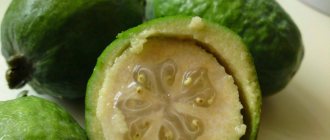The amazing plant morning glory sweet potato, which is used not only for decorative purposes, but also as an edible root crop, has only recently appeared in garden plots and in apartments of residents of the CIS countries. The flower has a very aesthetic appearance, which is important to maintain with proper care.
Reproduction
Morning glory sweet potato can reproduce in two ways: vegetatively and by seeds.
The first option involves propagation by tubers and cuttings. In this case, the tubers must be dug up in the fall, even before the onset of frost.
Usually in the month of December, buds appear on them. Then the tuber needs to be transferred to a nutrient substrate - peat is usually mixed with river sand. However, regular flower soil will also work.
When the seedlings appear, you can use a sharp knife to divide the tubers into 2-4 parts and plant each one in a separate container for growing. As the weather warms up, the planting material moves into pots.
This method is only good if the plant has developed tubers. In this case, you can get up to 15-20 young plants from each bush. But the fact is that in most varieties the tubers develop very slowly, so it is not possible to obtain high-quality seed material in the first year.
Morning glory can be propagated by cuttings, which can be obtained from sprouted tubers. They are washed under running water so that all the milky juice comes out, dried in the open air for two hours and sent into water for rooting.
You can also get cuttings from purchased seedlings. In this case, the shoot is cut to a size of 10-15 cm, and several leaf nodes must be captured.
A characteristic feature of morning glory is the fairly rapid formation of the root system - you can get full roots already on the fifth day, so there is no need to use “Kornevin” and other drugs with a similar effect.
Morning glory can also be propagated by seeds. But this method is used quite rarely - they take a very long time to germinate, so you can enjoy all the beauty of this plant no earlier than in the second half of summer.
Briefly about the content
You can make morning glory bloom using special conditions
This is especially important if it is grown indoors. The plant needs a lot of light, otherwise the stems will stretch unsightly
Morning glory should not be obscured by anything. Therefore, you cannot plant it near large bushes. Proper care involves abundant watering. It is better to do this in the evening with warm water. There should be no stagnation of moisture in the pot, so you need a pot with drainage holes. Watering should help keep the soil moist, as the plant is very sensitive to drought.
Morning glory blooms from mid-summer to mid-autumn - the exact duration depends on the variety. As fertilizers, it is better to use universal products for flowering plants. It is impossible to add a large amount of drugs, as this stimulates the growth of green mass.
On a note! There is no point in spraying morning glory; once a month, the leaves are carefully wiped with a cloth to remove dust.
It is better to propagate morning glory by seeds. Boxes with seed appear after flowering. Frosts quickly spoil them, so the seeds are collected from the first flowers.
Seed material can be stored for 4-5 years
The seed must be sown early - in the first weeks of March. This is necessary so that the sprouts not only hatch, but also gain strength before being transferred to the open air. You can plant seeds in universal soil; cover the top of the container with film or glass - this will create a greenhouse effect.
Another propagation option is tubers. To do this, the tubers are carefully dug up in the fall, placed in a dark place and left until spring. During this time, buds appear on them and the fruit can be divided into four parts. Afterwards, the plant is planted in different pots and cared for as standard.
Morning glory is represented by different varieties. This is a beautiful and spectacular plant that attracts not only its flowers, but also its decorative leaves.
Types and varieties of morning glory
Of the more than 500 species of morning glory, only 25 are grown in culture. Let's briefly talk about the most popular of them.
Morning glory Cairo (Ipomoea cairica)
Originates from Asia and Australia, its shoots grow up to 5 m long. They are so densely strewn with blue flowers that morning glory looks like a real carpet. The leaves are lobed, palm-shaped, carved.
Morning glory (Ipomoea purpurea)
An annual liana whose pubescent stem reaches 8 meters. Leaves are glabrous, oval or lanceolate, opposite. Single red, dark purple, purple, blue, white or pink gramophone flowers up to 7 cm long. There are varieties with variegated and even double flowers. The tropical belt of America is considered the homeland of morning glory. Varieties: Starfish, Scarlett O'Hara, Nochka, Giselle.
Morning glory Nile (Ipomoea nil, Ipomoea imperialis)
Or in Japanese, asagao (morning face) is a highly branched annual vine up to 3 m long. The leaves are large, broadly oval, opposite, long-petiolate, dark green. Funnel-shaped flowers of red, soft or dark blue, pink or purple with a diameter of up to 10 cm. This morning glory blooms from mid-summer to October. Varieties: semi-double Pikoti blue or red with white edging, hybrid Serenade - double corrugated flowers of dark red or lilac color 8 cm in diameter.
Morning glory (Ipomoea tricolor)
Or red-blue morning glory (Ipomoea rubro-caerulea) - native to the tropics of America. A perennial used in cultivation as an annual plant. The stem reaches a length of 4-5 m. The leaves are large, opposite, heart-shaped, bare, wrinkled, the petioles are long. Funnel-shaped flowers 8-10 cm in diameter are collected in bunches of 3-4 pieces: pale blue with a white tube, but when they fade, they become pink-purple. This morning glory blooms from early June until the first frost.
Some varieties contain psychotropic substances used in medicine. Varieties popular in floriculture: Pink Lollipop, Blue Star, Sky Blue, Flying Saucer.
Morning glory (Ipomoea hederacea)
An annual liana from the American tropics. The branched stem reaches a length of 2-3 meters, the leaves are large, heart-shaped, three-lobed, similar to ivy leaves. Funnel-shaped flowers with a diameter of about 5 cm are usually sky blue, sometimes with a white border, but they can be red, burgundy, or pink. They are collected two or three on a long peduncle. They bloom from July to mid-autumn. The Roman Candy variety with variegated white-green leaves is even grown as an hanging plant.
Morning glory (Ipomoea noctiflora)
Also from tropical America. The stem is up to 3 m long, shoots up to 6 m, large heart-shaped leaves, fragrant white flowers are also large - up to 10 cm, open at night and close with the first rays of the sun, and those unfamiliar with this mystery of Farbitis moonflower ask why their morning glory does not bloom. But on a cloudy day, the flowers close only in the evening, and you will be able to appreciate their amazing delicate beauty. This morning glory blooms from July-August to October.
Quamoclites
These are morning glories with lacy carved foliage and small tubular-shaped flowers. Among the most popular in culture: feathery quamoclit (Quamoclit pennata), Slaughter's quamoclit, or cardinal vine (Quamoclit x sloteri), fiery red quamoclit (Quamoclit coccinea) and lobed quamoclit (Quamoclit lobata).
In addition to the described species and their varieties, such types of morning glory as Brazilian, palmate, Moorish, lobed and others are slightly less common in cultivation.
Why I advise everyone to grow sweet potatoes
Overall conclusion: sweet potato is a wonderful plant! Decorative foliage, and “Garnet” also has carved leaves, long, up to 1.5 m long, and sometimes it blooms.
Early varieties are suitable for cultivation in regions more northern than Kuban (“Manchzhursky”, “Pobeda-100”). And in greenhouses, sweet potatoes can be grown anywhere.
For propagation, they often buy seedlings, but this is irrational, it is better to buy sweet potato tubers in the fall and in the spring you can sell the seedlings yourself, there will be so many of them.
It is stored like a pumpkin, in a dry and warm place without any problems, I haven’t seen any pests, it doesn’t require any special care, the yield is phenomenal, the taste is excellent - I wonder why it doesn’t grow in every plot?
I assure you, love for sweet potatoes comes through the process of growing, admiring, eating…. And once you have planted sweet potatoes, it is very difficult to stop expanding your collection.
Description and varieties of plants
The height of morning glory is 30 centimeters, and the width can reach two meters. The shoots can hang from the basket or curl along a support built next to the plant. They also spread well on the ground.
Ipomoea sweet potato has funnel-shaped flowers of white, pink or lilac color. The flowers look impressive.
Most types of sweet potatoes are grown for their decorative leaves, as they do not bloom, but there are plant species that bloom brightly and for a long time.
Morning glory has large leaves, reaching 15 centimeters in diameter. The leaves grow on elongated petioles. Depending on the variety, sweet potato leaves can be green, light green, or yellow.
The following ornamental varieties of morning glory sweet potato are known:
- the “Light Green” variety has palmate-lobed and bright light green leaves;
- the variety “Sweet Caroline Purple” has serrated, five-lobed, purple-violet leaves;
- the “Sweet Heart Red” variety has maple leaves divided into lobes. The color of young leaves is brown, and older leaves are greenish-purple.
Ipomoea Cairo, Purple, Nile, tricolor and other varieties are often used in landscape design.
Ipomoea Cairo has 5-meter shoots and abundant blue flowers. When budding occurs, the vines are densely covered with inflorescences, which creates a solid carpet of delicate petals.
The annual morning glory Purple has a pubescent stem, 8-meter stems on which oval foliage grows. The plant blooms with flowers of blue, soft pink, red, purple or white. Sometimes in gardens you can see terry morning glory purple.
Ipomoea Nile has shoots only 3 meters long. The plant blooms with blue, pink, lilac flowers. Blooms from mid-summer to October.
The annual tricolor morning glory can reach 5 meters in length. Heart-shaped leaves and 8-centimeter buds grow on the branches. At the beginning of flowering, the plant blooms with blue shades, which turn into a pink shade closer to the flowering period. It blooms from mid-summer until the onset of the first frost.
General description of the species
Ipomoea Sweet Potato is a perennial crop, but in home floriculture the plant is grown as an annual. The deciduous plant belongs to the Convolvulaceae family and grows up to 5 m. Botanical description:
- The root system is tuberous, spindle-shaped. The yellow-orange pulp contains antioxidants that reduce the likelihood of cancer cells forming.
- The shoot is smooth, liana-shaped.
- The leaf blade is heart-shaped with a pointed end, from 3 to 14 cm long. The color can be varied, from light yellow to red-purple.
- The flowers are funnel-shaped, of various colors, up to 5 cm in diameter, the inflorescences are formed by single buds, collected from 1-3 pieces.
- The seeds are elongated, reaching up to 6 mm in length. The seeds are in a flat, woody box, angular in shape. Seeds are located singly in each chamber.
There are more than 7,000 species, which are divided into decorative, fodder, dessert and vegetable.
- Desserts taste like melon, pumpkin or banana. They are used to prepare fruit salads, jams and aromatic alcoholic drinks.
- Vegetable – has a rich taste and aroma, easily replaces potatoes. It is used boiled, raw or baked. It is used to produce aromatic vegetable and meat broths.
- Fodder - goes to feed livestock.
- Ornamental varieties - morning glory Sweet potato is intended for cultivation in open ground, as a hanging and indoor plant.
As a food product, morning glory sweet potato brings great benefits to the body. The plant is low in calories and contains vitamins, minerals and other beneficial substances. Useful properties of morning glory Sweet potato:
- improves the functioning of internal organs;
- removes bad cholesterol, waste and toxins;
- stimulates the work of the heart muscle;
- has an anti-inflammatory effect;
- strengthens the nervous system.
Important!
Ipomoea Sweet Potato is not recommended for use by pregnant women or during lactation. Ipomoea Sweet Potato is unpretentious in cultivation and care; it can grow on sandy or loamy soil with neutral acidity.
In most cases, morning glory sweet potatoes are grown outdoors. The place should be well lit and protected from gusty winds. After flowering, perennial varieties are transplanted into a pot and brought into a warm room. When growing morning glory Sweet Potato indoors, after flowering, the top is trimmed and placed closer to the window, making sure that there are no drafts or sudden changes in temperature.
Diseases and pests
Most often, morning glory is attacked by aphids, whose feeding is indicated by yellow spots that appear after puncturing and sucking juice from the leaves of the plant. Aphids are also dangerous because they produce honeydew, on which destructive sooty fungi settle. Spray with insecticide.
Another dangerous pest is the spider mite, whose presence can be determined by its thin web and small dots. Spray with acaricide.
Application
Morning glory is an ideal vine for the garden, balcony and terrace. Can be grown in open ground, also in containers, hanging baskets or flowerpots. Due to its winding shoots, it perfectly hides pillars, gratings, fences, walls, and other supports.
Concluding remarks
In our climate, morning glory is grown as ornamental plants. Also, morning glory (sweet potato), which in its natural habitat is considered an edible plant (tuberous roots). Sweet potato has many varieties with decorative leaves, so it is also used as an ornamental plant.
Ornamental species grown in the garden
The species most commonly grown in gardens reach several meters in height. In our climate, these are annual plants, characterized by large growth, different leaf shapes and funnel-shaped flowers. Wrapping around the support, they form dense green walls, which, during flowering, represent a decorative element of the garden, terrace and balcony.
The liana is grown for its decorative flowers, which can be very variable depending on the variety. Ipomoea purpurea impresses with cup-shaped flowers on long stalks in pink, white, blue and various shades of these colors. Morning glory tricolor is characterized by large flowers that are blue, white, purple or reddish in color. Morning glory is an example of a very original species, the tubular flowers of a creamy orange-red color look exotic and make an interesting accent in the garden. Ipomoea fiery red is characterized by large, scarlet flowers. In addition to the decorative nature of morning glory species grown in the garden, do not forget about decorative leaves.
Winter-hardy vines
Almost all climbing plants are winter-hardy. Popular perennials: wild grapes, campsis, clematis, wisteria and other varieties.
Special websites on this topic contain a huge number of photographs of plants entwining, writhing, and trembling. Having seen the unearthly beauty, you can easily find information about any specimen you like.
Breaking out of the bustle of the city, boxes - many floors, you dream of merging with nature, of peace and comfort. That is why any summer cottage or territory of a country house is a virgin land for realizing the most incredible fantasies in their improvement. Climbing plants will help transform the site with the help of various supports, arches, and structures.
Beneficial features
Morning glory tubers are popularly called sweet potatoes due to their similar taste. In addition to starch, it contains many useful elements for humans:
Tubers can be boiled, baked, or eaten raw. It is ideal for dietary dishes due to its low calorie content and huge amount of vitamins. If you use it often, the body will increase its resistance to almost all diseases. It also helps fight cancer cells in the body; for this, tubers need to be consumed almost every day.
Its beneficial properties:
- Cholesterol removal.
- Improving the functioning of the gastrointestinal tract.
- Strengthening the nervous system.
- Building muscle mass.
- Increasing female libido.
Combination of morning glory with other plants in landscape design
In landscape design, morning glory vines are used to decorate not only vertical, but also horizontal surfaces of various carpet plantings and various flower beds. A flower bed made from a mixture of morning glory of different colors looks impressive against the background of coniferous trees.
Asters planting and care in open ground
Morning glories open their gramophones early in the morning. If the sky is overcast, the flowering will continue all day; on a bright sunny afternoon, the flowers will close. This is due to the fact that plants cannot tolerate excess ultraviolet radiation.
Note! Morning glories, planted in tall pots in the form of vases or hanging flowerpots on special supports located on a green lawn, will create islands of flower waterfalls flowing to the ground. Early species begin to bloom in early summer, their flowering can last until the onset of cold weather
The combination of hybrids and varieties with different flowering periods allows you to create a constantly blooming green wall. The total flowering period of the entire flower arrangement will depend on when different types of morning glory begin to bloom. A tall hedge of flowers tied to supports will become a beautiful background for lilies and daylilies, phlox and irises, garden geraniums, asters, marigolds, peonies
Early species begin to bloom in early summer, their flowering can last until the onset of cold weather. The combination of hybrids and varieties with different flowering periods allows you to create a constantly blooming green wall. The total flowering period of the entire flower arrangement will depend on when different types of morning glory begin to bloom. A tall hedge of flowers tied to supports will become a beautiful background for lilies and daylilies, phlox and irises, garden geraniums, asters, marigolds, and peonies.
Flowering Gramophone Ipomoea
Crop care, flowering
Ipomoea agricultural technology is quite simple and includes the following rules:
- Watering should be done regularly and in moderation. The flower does not tolerate stagnant water. Since September, morning glory is watered only after the soil has dried.
- During the period of active growth of morning glory, additional feeding is needed. The first time it is ammonium nitrate, and then mineral complexes. For flowering varieties, it is important not to apply large amounts of nitrogen fertilizers during budding, otherwise the plant will devote all its energy to forming leaves.
- The bushes need to be cleaned - remove old dried leaves and shoots. Pruning is done in autumn and spring. Provided that the plant is cultivated as a perennial.
Perennial gaillardia: planting and care
The flower has a number of diseases and pests to which it is exposed if not properly cared for. If morning glory is watered too much, fungal diseases appear. To remove them, you need to treat the soil with a fungicide and remove the affected parts of the plant. In the case of soft rot or root rot, as well as in case of viral infection, morning glory cannot be saved. It must be destroyed so that the disease does not spread to healthy plantings.
With excessive watering and cool weather, white blisters may appear on the leaves. To avoid this, the flower is placed in bright areas heated by the sun.
Advice! In order for morning glory foliage to be thick and lush, the flower must be pinched.
Among the pests, morning glory is attacked by aphids and spider mites. A soap solution helps against aphids, and the mites are washed off with water. In case of severe damage, the flower can be treated with insecticides.
Morning glories make beautiful flower arrangements when combined with other plants. The best neighbors for her will be:
- petunia purple or pink;
- Europhobia;
- marine lobularia;
- purslane grandiflora;
- ornamental cereals.
Possible pests and diseases
The appearance of pests and diseases is usually associated with violations of agricultural practices. If the plant is thickened and regularly flooded with water, root rot appears, which can destroy it. The first symptoms of the disease are damage to flower stalks. If signs of rot appear, you should immediately reduce watering and regularly loosen the soil. To avoid rot, you should carefully monitor the amount of incoming water, following the watering rules.
Quite often the lower leaves and young shoots are affected by the fungus. To avoid this, you should regularly remove fallen leaves, inflorescences, dried lashes and all parts of the plant that look diseased. Fungicidal drugs are also used to combat fungus.
Harmful insects can cause significant harm to the plant, reducing its decorative value or infecting it with disease. Among the pests for morning glory, two types of insects are most dangerous:
- aphid;
- spider mite;
- whitefly
Signs of aphids will be yellow spots on the foliage. These insects feed on plant sap by piercing the surface of leaves. At the same time, they infect the plant with honeydew and attract other insects that transfer aphids from one flower to another.
To get rid of the infestation, wash off the aphids with cold water from a high-pressure hose. After this, the entire planting is treated with a solution of a suitable insecticide. For a more reliable result, it is better to repeat the treatment after about a week.
To prevent the appearance of aphids near the morning glory thickets, you can plant plants that repel them:
- garlic;
- onion;
- Dalmatian chamomile (the main thing is not to confuse it with common chamomile, on which aphids thrive).
Determining whether a plant is infested with spider mites is quite simple. Its main feature is the thin cobwebs that cover the stems, flowers, and leaves of the plant. The easiest way to get rid of it is with a plant shower. You can use either plain cold water or a solution of laundry soap. You need to shower until the tick disappears completely. To be on the safe side, you can also treat the planting with a suitable insecticide.
Quite often, whiteflies parasitize the flowers and leaves of morning glory. They also feed on plant juices, as a result of which the flowers become deformed and dry out, reducing the decorative value of the entire planting. The best way to combat whiteflies is an insecticide solution that is used to treat morning glory thickets several times.
Lush morning glory bushes will be a magnificent decoration of any garden, and their ease of care and unpretentiousness make it one of the most popular ornamental plants. It should be remembered that this flower is highly poisonous, so it can only be grown in open ground, in the fresh air. If you want to grow it in an apartment, then it is better to place the flower on the balcony.
In many southern countries, morning glory is grown as a perennial crop, but when planted in the Russian climate, it always behaves like an annual, even with the most careful care. The only way to make it conditionally perennial is to allow it to reproduce by self-sowing. To do this, the planting must be dense and extensive enough so that as many seeds as possible fall on the ground, which will produce abundant growth next year.
Wintering a plant: how to prepare a flower for the cold season
Morning glory in the middle zone climate is grown as an annual - it dies at the first cold weather. After flowering, the above-ground part of the plant is removed and the soil is dug up. Morning glory can reproduce by self-sowing and can grow in the same place the next year. If you still want to preserve the plant, it is dug up and kept in room conditions in winter at a temperature of about +20°C. It is important to provide morning glory with sufficient light.
Despite the fear of frost and lack of flowering, morning glory is grown by many gardeners for its decorative foliage. If you wish, you can even eat its tubers, although in decorative varieties they are small in size.
5 1 vote
Article rating
Growing conditions
Morning glory, planting and caring for which is not difficult, still requires attention. Initially, you need to plant planting material at the right time and properly care for the sprouts.
Morning glory seeds
Growing from seeds
In order for Farbitis to prepare to bloom at the end of May, you need to plant the seeds on time
After their germination, it is worth paying special attention to the development of seedlings
Morning glory seeds should be planted in early March. To do this, you should prepare small cups of peat. The base should be slightly damp. Before planting the seeds, you can soak them in a solution to speed up growth.
Note! At a room temperature of 18 °C, seedlings will appear in 10 days
Seedling care
For rapid growth of seedlings, you need to organize suitable conditions:
- place the sprouts under a lamp for additional heating and lighting;
- moisten the soil with a spray bottle when the soil dries out;
- if necessary, you need to thin out the seedlings by removing several units.
With basic care, the seedlings will quickly grow stronger and turn into high-quality seedlings.
Seedling care
The seedlings will definitely not bloom in peat pots, but they will begin to weave almost immediately. A week after germination, you need to immediately install supports. If the seedlings are intertwined with each other, it will not be possible to untangle them before planting.
Seedling care
When and how to plant morning glory in open ground
You can grow a full-fledged plant if you plant the sprouts in open ground in time. The ideal time to reschedule would be early June. It is not worth removing the earthen lump from the root system.
You need to choose a place where the soil acidity is average. Pre-apply complex fertilizers. Farbitis should be planted in an open area so that direct sunlight falls on the flower from all sides.
Sprouts in open ground
Watering mode
At first, the flower will consume a lot of water, but over time the need for irrigation will decrease. The main thing is not to overdo it with watering, otherwise the root system will rot. Watering should be done when the soil under the bush dries out.
Important! If there is enough water, the flower will grow quickly
How to feed morning glory for abundant flowering
In order for flowering to be abundant and timely, you need to apply fertilizers on time. It is advisable to use a mixture of ordinary humus and deciduous soil. You need to apply about half a bucket of dry fertilizer under the bush. If you feed the plant in excess, the root system will only develop greatly.
Features of care during the flowering period
During the flowering period, farbitis needs to be properly cared for:
- make sure that the soil under the bush does not dry out;
- constantly loosen the soil to avoid stagnation of moisture;
- Fertilize once every 3 weeks.
Additionally, it is necessary to remove dry, damaged shoots and already faded buds.
Features of care during the rest period
During the dormant period, you need to reduce watering. You should not apply fertilizer to slow down growth. It is necessary to remove the above-ground part of the flower
This is important so that during the cool season the stem and branches do not grow.
Collection and storage of seeds
Abundant flowering guarantees a good seed harvest. Planting material should be collected at the beginning of September. Otherwise, the boxes will open on their own and self-seeding will occur.
Collection of seed material
The material must be placed in glass jars, which in turn must be placed in a dark, slightly cool place until next year.
Propagation of morning glory by cuttings
Reproduction can be carried out not only by sowing, but also by cuttings. How to prepare and root a cutting:
- Cut a branch from a bush.
- Cut 20 cm from the workpiece so that two nodes remain on the future cutting.
- The cut is made at an angle of 45°.
- Place the cutting in water. After five days, roots will appear.
- Place the workpieces in a peat, pre-moistened substrate.
After a week, the cuttings will take root and become suitable for planting in a flower bed. This option is a secondary method of propagating a flower.
Reproduction by cuttings
Preparing for winter
The type of crop is not at all frost-resistant. Therefore, only annual varieties are planted in Russia. But even such specimens need to be prepared for winter: cut off the ground part and some of the stems as much as possible.
The soil
In a specialized store for growing indoor morning glory, you can purchase standard soil for flower plants, or you can make a mixture yourself. To do this, neutral soil from the street must be disinfected in any way, then mixed with humus, adding superphosphate and potassium fertilizers. If ordinary soil is too acidic, then it is mixed with ash or lime. And after five days, fertilizers are added.
The main thing is that the soil is very lush. Although, if you don’t bother with the composition of the soil, the sweet potato will still grow, but not as lushly as you would like even without inflorescences. It is advisable to add potassium once a year; it is best to do this in August-early September. You can feed it with ash; to do this, dilute a glass of ash in a ten-liter bucket of water. Mix well and water a little.
Growing from seeds
All morning glory is easily propagated by seeds, which remain viable for four years. Seeds can be sown either immediately in open soil, when the air and soil have warmed up sufficiently, or for seedlings at the end of March.
Sowing seeds
Before sowing the seeds, they should be soaked for a day in water at room temperature. When the seeds swell, they can be sown. It happens that a small particle of seeds swells within 24 hours. Such seeds must be pricked with a needle and soaked in water again for the same time. Morning glory seeds usually germinate in 10 days. The ideal room temperature for successful seed germination is +18 degrees. Seeds can be sown in boxes filled with a specially prepared substrate, or in peat pots, which will greatly facilitate planting seedlings in open ground.
Particular attention should be paid to the composition of the soil for sowing seeds, since each variety of morning glory requires a certain soil. If you sow morning glory of African origin, then it needs a substrate for succulent plants with the addition of crushed expanded clay
American varieties will not be able to grow in such soil. For species of American origin, it is necessary to mix two parts of leaf humus, part peat and half a part of fine expanded clay. For American species, it is good to add crushed coconut fiber to the substrate.
Experienced gardeners sow morning glory seeds in peat cups of three or four pieces. The cups must be placed in a tray and covered with transparent film to create a small greenhouse. As the soil dries, it is necessary to water it, and the greenhouse should be ventilated from time to time.
Particular attention should be paid to the temperature regime - it is optimal if the temperature in the room is about 18-20 degrees. After 10-12 days, the first shoots should appear
Features of planting morning glory sweet potato
Morning glory on the balcony is grown from seeds. The plant's planting material has good germination for four years. The seeds must first undergo stratification or remain in warm water for 24 hours. If after 24 hours the seed has not swelled, you need to pierce the outer shell with a needle and re-send it into warm water for a day.
Planting morning glory sweet potatoes from seeds is carried out as follows:
Seeds are sown in the ground at the end of May. The soil for the plant must be selected taking into account the variety of morning glory. For example, some varieties grow better on soil mixed with fine expanded clay. The second varieties are best planted on soil with leaf humus, to which peat, vermiculite and coconut fibers are added. Distribute the prepared soil mixture into small containers into which seeds are sown in threes. Place the glasses in a warm place and cover with film to create a greenhouse effect
It is important to ensure that the soil does not dry out, so the seedlings need to be watered regularly. It is also important to ventilate seedlings
Sprouts are grown at a temperature of no more than 20 degrees Celsius. If you properly care for the sown seeds, the first shoots will appear within 10 days. In June, young seedlings grown from seeds are transplanted into open ground. Dig small holes at a distance of 20 centimeters from each other. Make a frame above the flowerbed to support future vines. Plant one seedling in each hole, cover with soil and water.
Sometimes gardeners at the end of May sow crop seeds directly into open ground, without first growing seedlings
It is important to plant plants in bright and comfortable places, on slightly acidic, well-drained soil
Harvest and storage
Sweet potato is a very interesting vegetable. Usually the most delicious vegetables are those freshly picked from the garden. But the situation with sweet potatoes is different. It is not eaten after digging; at this time it is completely tasteless. It must lie for several months and only then will it gain taste and nutrients.
Ipomoea sweet potato tubers
Harvesting must be done before frost, until the temperature outside drops below 10 degrees Celsius. This vegetable is a tropical plant and low temperatures are harmful to it. Tubers are dug up in dry, warm weather. There is no need to wash them, as this will affect the shelf life. If there is a lot of soil on the tubers, let them dry and the soil itself will fall off the vegetable. The dug up vegetable is very delicate; under no circumstances should you try to mechanically clear the soil from it or throw away the fruits. All this will lead to damage to the tubers and further rotting.
In order for fruits to be stored well, they must be properly prepared. A freshly dug vegetable has a very delicate and thin peel, and in this form it cannot be stored for a long time. Therefore, the tubers are placed in a room with a temperature of +32, +36 degrees for at least 5 days. Humidity should be at 80-90%. During this aging, the tubers develop a thick skin and can then be stored indoors for months.
After such aging, the vegetable is stored indoors at room temperature in a regular open box.
For your information! Sweet potato tubers should not be stored in the refrigerator. Even at this temperature, it “freezes,” loses its taste and spoils. It cannot be stored in closed containers, since the vegetable emits gas, which in a closed space will negatively affect the fruit.
In order for the tubers to acquire their wonderful taste and become sweeter, they need to be stored for several months. Therefore, if you want to fully appreciate the taste of this vegetable, do not eat it before the New Year.
Varietal varieties of morning glory
Most often, various species forms are grown in our gardens. This vine is very widespread in Japan, and Japanese breeders have developed many varieties of it. In addition, morning glory in Japan is considered a medicinal plant.
- The Grandfather OTS variety is very popular among our gardeners. It is also called Grand. This is the earliest variety in terms of flowering. The flowers are very large, up to 5 cm in diameter, rich purple in color with dark strokes. The bush grows very lush, the shoots reach 3.5 meters in length.
- The next very popular variety is Pink Lollipop. This is a variety of domestic selection with very beautiful, bright pink flowers. The heart of the flower is ivory-colored, the bells reach 8 cm in diameter. The foliage of this variety is much lighter than other varieties.
- Dacopa - this variety has slightly lilac petals with a blue tint, like a translucent flower with a pink core, it is also called blue morning glory. The flowers of this variety look like exotic butterflies. The variety blooms very profusely, and sometimes the foliage is not even visible because of the flowers.
- The rare variety Rosita has bright red flowers, which are painted with white strokes. This variety is considered the best for growing on the balcony. Its shoots reach a length of 2 meters, and some gardeners grow Rosita in flowerpots.
- Of the double flowers, the most popular variety is Serenade to the Sun with carved, very shaggy bells. The edges of the flowers are painted with patterns, and their color is wine red with white stripes.
- The brightest flowers of the morning glory variety Giselle are sky blue in color, reaching a diameter of 8 cm.
Description of quamoclites (with photo)
Let's start the description of the cypress vine with the fact that quamoclites have strong climbing stems. They easily climb the supports, twisting around them like thin cord-like snakes. The shoots reach a height of 1 to 3 meters; there are varieties up to 5 meters tall. Heart-shaped, dissected into 3 lobes or into many thread-like segments, needle-like leaves sit tightly on the stems; they can reach 10-15 cm in length. In the photo below we will see how variable sheet plates of different types are.
You can see and admire the flowering of quamoclites. At this time, star-shaped buds with 5 petals bent from the tubular corolla are formed. During the day, the flowers bloom, and in the evening they curl up into a fancy tube. Some species have the ability to close buds when exposed to sunlight or excess lighting. The flowering period usually occurs at the end of summer, after which the fruits set in the fall - a spherical capsule with 4 seeds. The surface of the sphere is light brown and is located on a short fruit stalk.
How to plant morning glory and care for it
Ipomoea annual is tolerant of all conditions, but grows better with proper planting and good care. It loves light and warmth, loose, non-acidic soil, and quickly climbs supports, but some varieties do well without them, covering the ground on the slopes with a thick multi-colored carpet. It responds to abundant watering by rapid growth and cannot tolerate stagnant water. Drying out the soil is very undesirable - the leaves wither and the flowers do not open. The best place to plant it is south, southeast or west. It also grows in the shade on the north side, but it grows very tall and almost does not bloom. She feels uncomfortable in places blown by strong winds. Therefore, it is ideal when the bed is protected.
Morning glory will create an emerald hedge in a matter of weeks
It begins to bloom in the morning, and as soon as the sun warms up, the gramophones close, but if it is cloudy during the day, the flowers remain open all day. Moving from place to place is very painful. It does not tolerate frosts, and moonflowering farbitis generally stops flowering already at 10 degrees. Often this plant is sown in pots or containers to decorate and protect a balcony or terrace from the hot sun.
Where to get sweet potato planting material
But in order to grow sweet potatoes, you must first find planting material, and this turned out to be not so easy. At that time, Sweet Potato Bushes did not have the varieties I needed, and besides them there was only one farm in the Tuapse region - Vitaly Lutsan, where there was a good selection.
Surprisingly, it seemed to me that such a wonderful root crop in the Kuban should be grown by everyone, but it turns out that conservatism is deeply ingrained in the minds of most gardeners.
Vitaly Lutsan confirmed my guesses when I came to him for planting material. The promotion of new food plants, which he is interested in, is proceeding with difficulty - there are few experimenters.
Natalya (Vitaliy’s wife) treated me to baked sweet potatoes of various varieties. I looked at how it was growing - both at the tops and at the roots, since it was October, digging season. The tops wildly braid and cover everything around within a radius of 1-1.5 meters, but you still need to look for the roots, they don’t sit still (however, this depends on the variety).
To begin with, I bought four varieties of sweet potato tubers: “Pobeda 100”, “Vinnitsky pink”, “Manchzhursky” and “Garnet”.
The sweet potato sprouts are very young, but they take root and grow like big ones.
Natalia and Vitaly instructed me about storage and germination; together we carefully wrapped each tuber in newspaper - sweet potatoes are sensitive to damage and may not be stored well after that.
While I was driving home, hugging the purchased sweet potato, I thought with horror that, having planted the sweet potato in the heavy and dense clay that forms the basis of our new plot, I wouldn’t be able to get it from there! Its tubers are huge and fragile. The tendency to spread away from the stem will not allow us to determine at least approximately where they are. A standard fenced bed is unlikely to help - the tubers will pass under the fence and then catch them around the site!
This is where the idea of a trap bed was born - fenced, high, with a relatively closed base.
Ipomoea sweet potato indoors
Unlike outdoor varieties grown as annuals, indoor sweet potato morning glory requires more careful care for about 5-7 years:
- The culture is considered to have come from warm countries, and therefore loves sunshine and fresh air. In the summer months, it is better to place the flower pot in an open area: balcony, terrace, porch.
- In winter, when the air in the room is very low, morning glory can shed all its leaves. Because of this, it is recommended to keep it in a warm room on a south or south-east window, where diffused sunlight is constantly present.
- A strong draft in the room can harm the plant.
- Water an indoor flower through a tray or using the usual method no more than once every 1-2 weeks, depending on the air temperature. Spraying is not carried out.
https://youtube.com/watch?v=qpJEQOD8WTY%250D
Watering
This indoor flower is ideal for busy or forgetful owners, as it does not need to be watered often. On the contrary, morning glory sweet potatoes are afraid of overwatering. Frequent watering is required only in the first few weeks of life. If the flower is on the balcony, then during the rainy season it is rarely watered.
And during dry summers, water it once or twice a week, after testing the soil in advance. If it is wet at a depth of one centimeter, then watering is not required. From August, watering is reduced to once a week.
If small light-colored blisters are noticed on its gorgeous leaves, then stop watering until these blisters go away. This is a plant’s reaction to excess moisture. It is best to water using a tray, from where the plant itself will take as much moisture as it needs through the drainage holes. It is better not to spray, but only wipe its leaves from accumulated dust once every three months.











